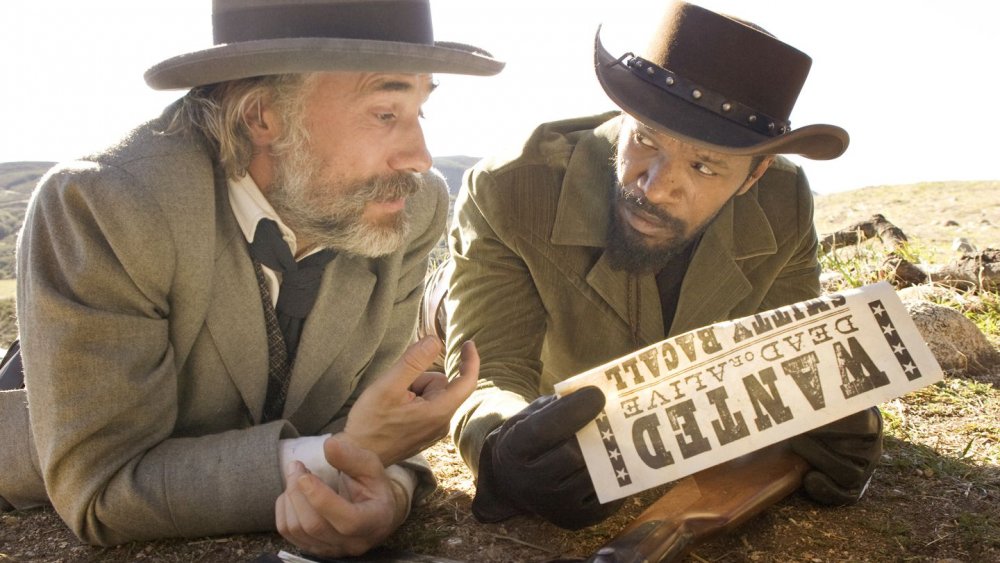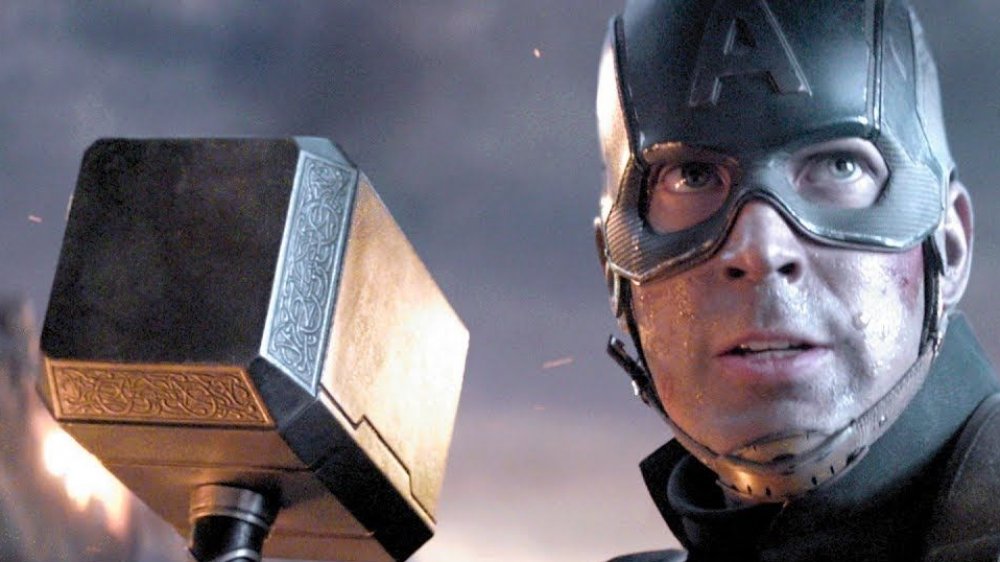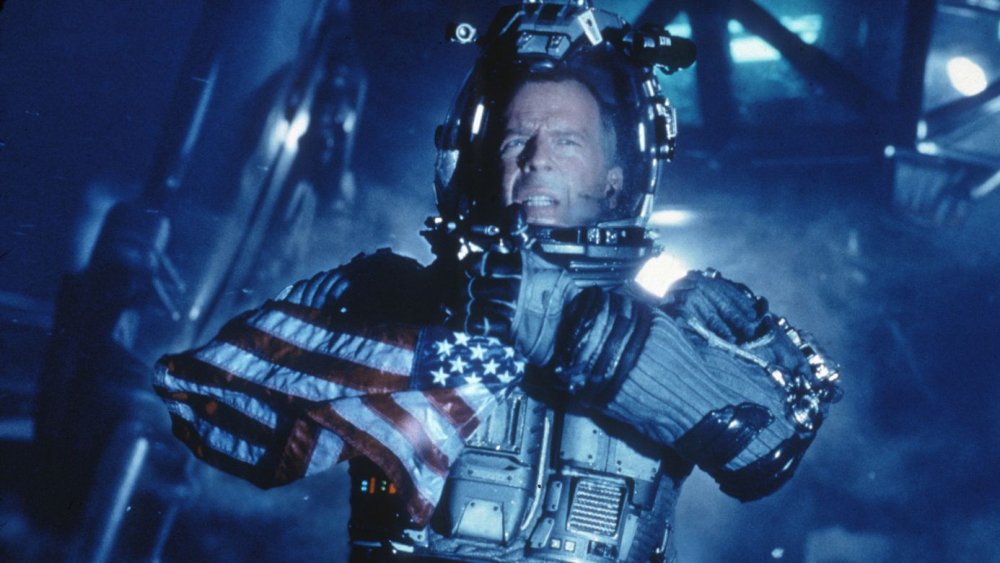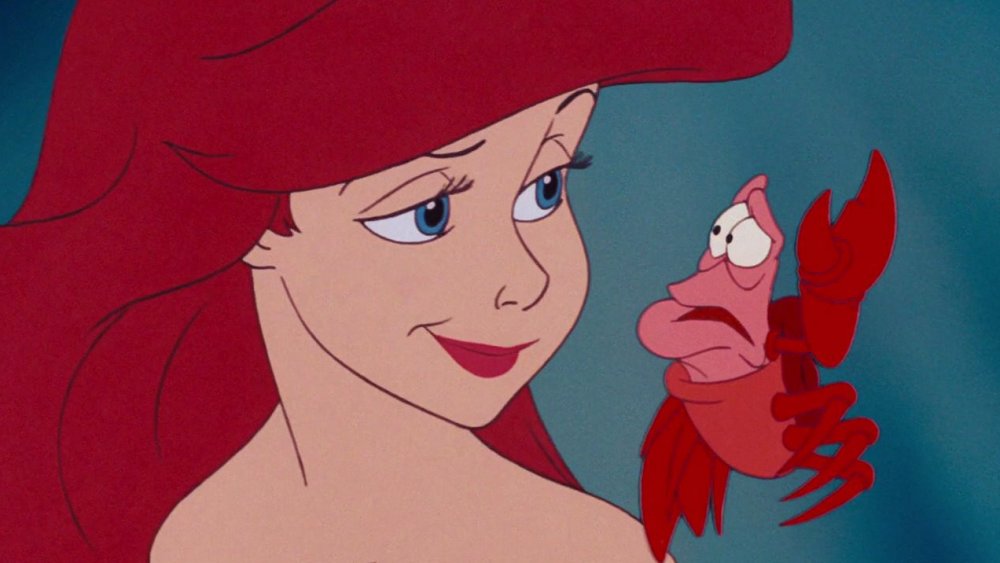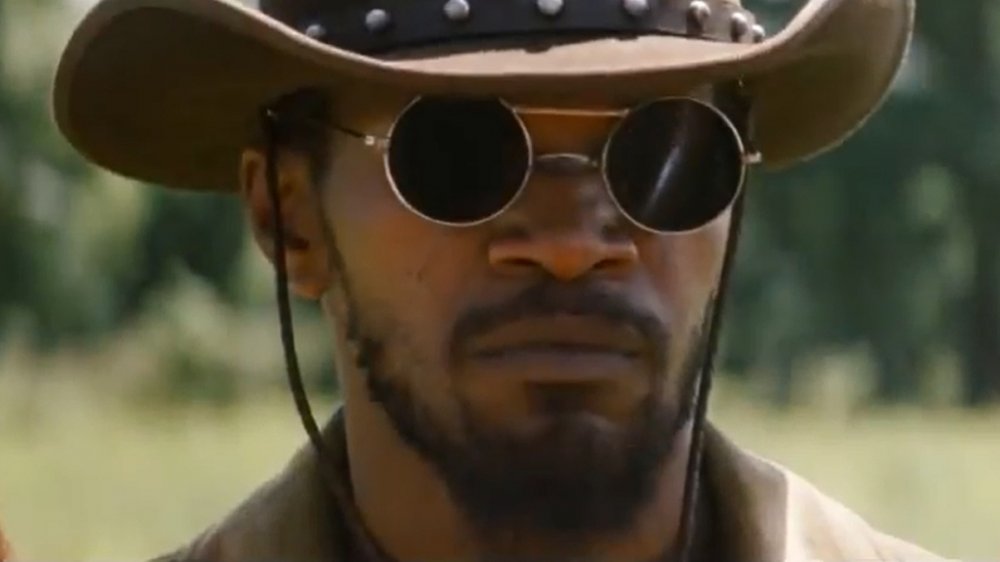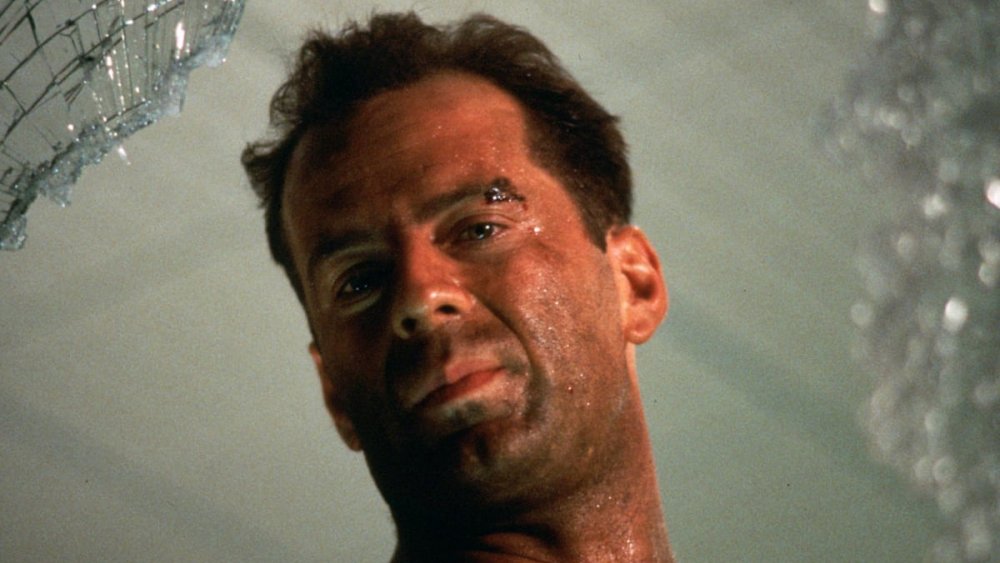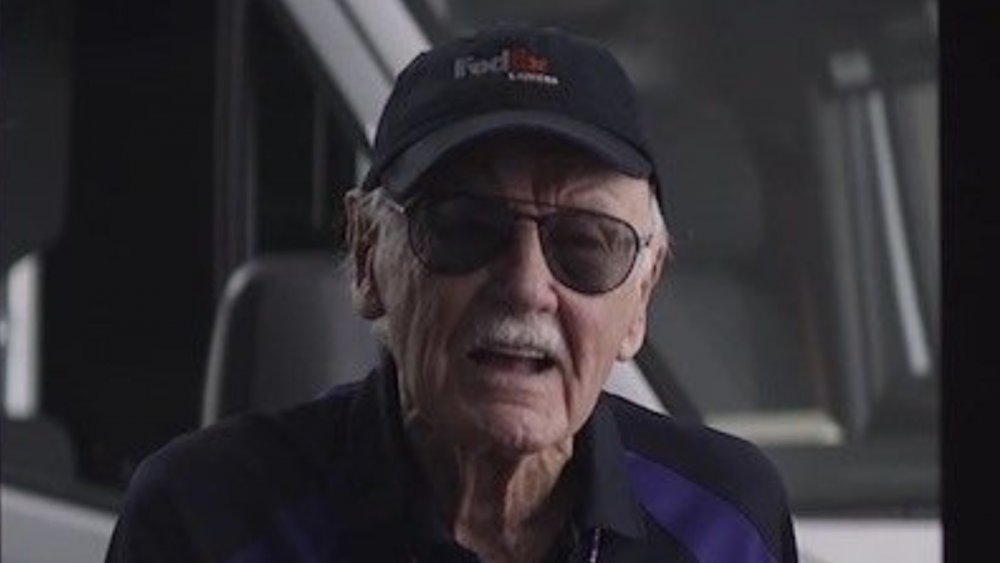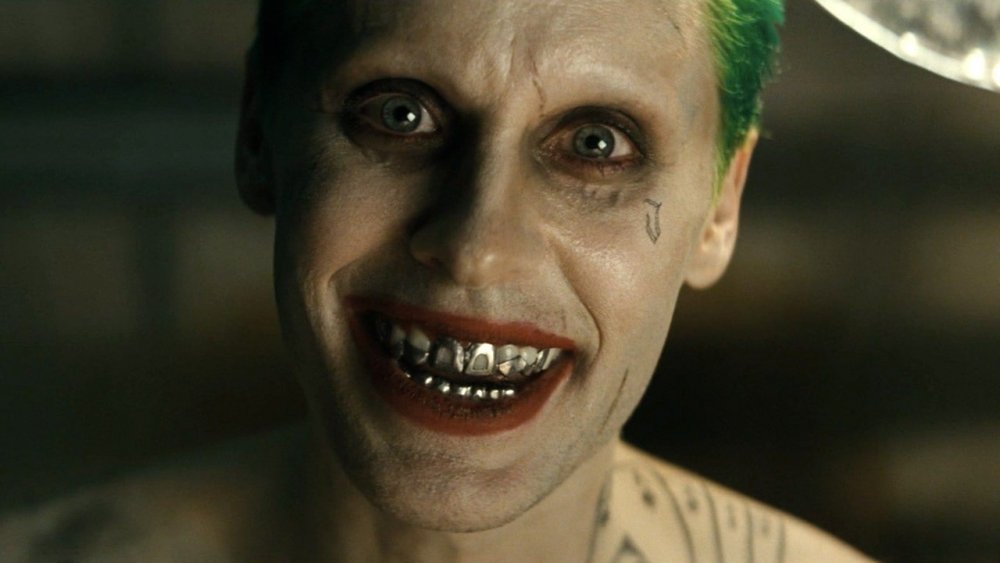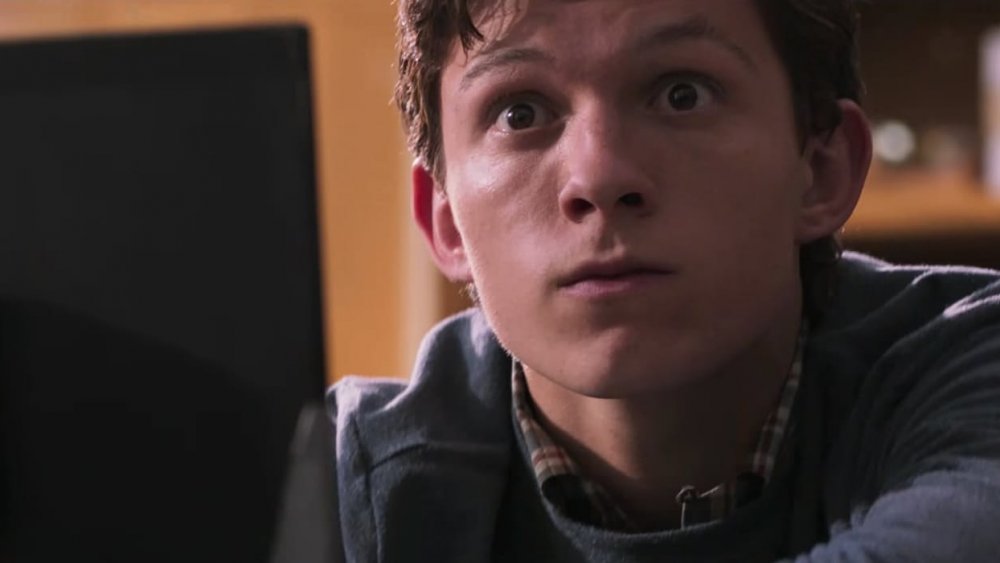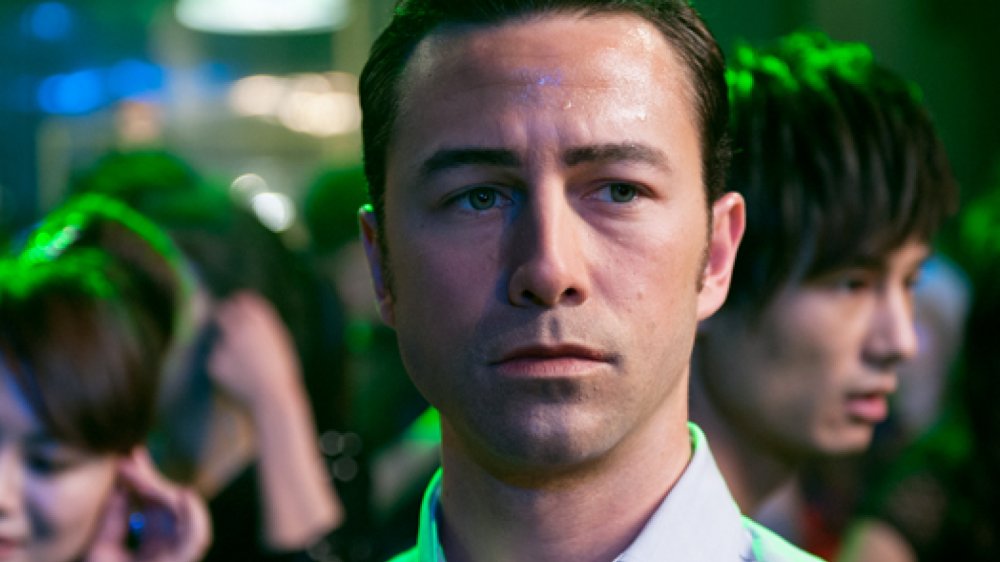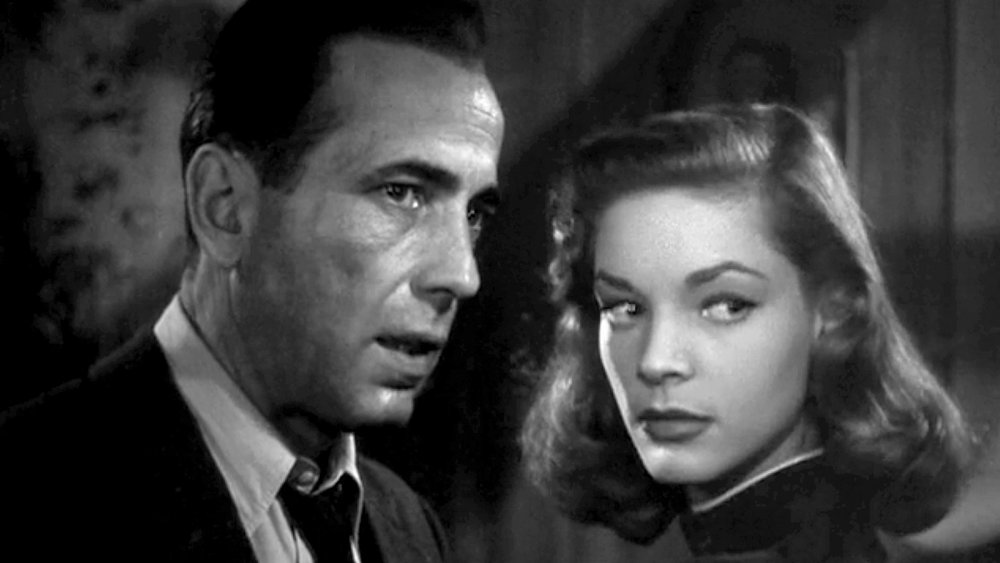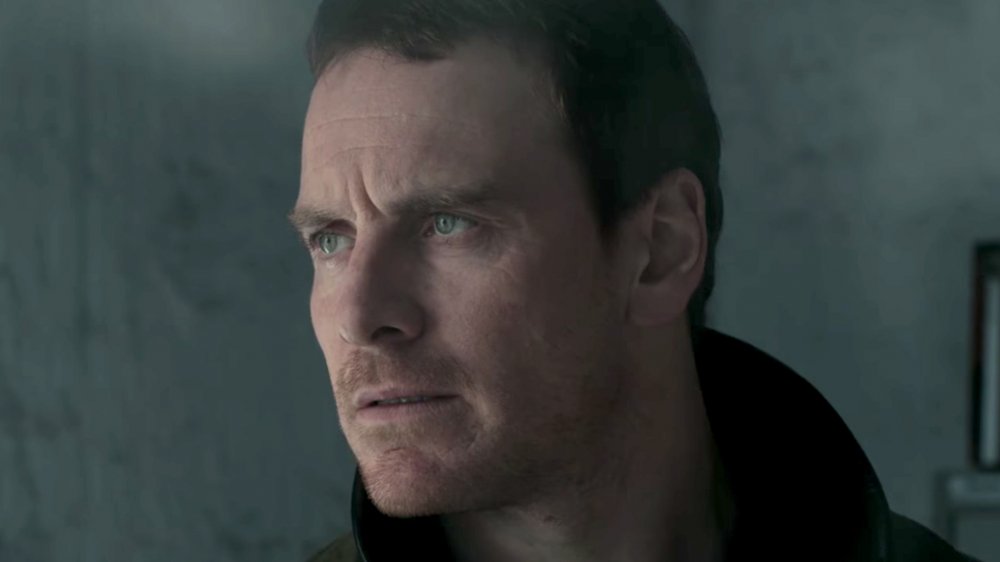Movie Plot Holes Confirmed By Filmmakers
Picking apart a movie with fellow cinephiles is one of life's true pleasures. Who doesn't love sitting around with friends once the credits roll, talking about laughable moments, things the director left out, and, of course, plot holes? And boy, does Hollywood provide a whole lot of plot holes to discuss. Some are small, and fairy negligible — the sort of plot hole it's easy to imagine ignoring. Nobody's perfect, right? But some are gigantic, unforgettable, how-did-that-ever-happen plot holes that break the central concept of the movie. Those are the kind of inconsistencies fans end up dissecting for years, even decades, after the movie's debut — and sometimes, not all that politely.
Plot holes are an unavoidable fact of storytelling. But it's not every day a filmmaker admits to them. That's what makes these particular plot holes so fun to talk about: Fans called creators out on them ... and said creators actually confirmed them as plot holes. That doesn't just take honesty — it takes genuine guts. These are the cinematic plot holes that have been acknowledged by their filmmakers.
Captain America shouldn't be able to summon lightning
Fans went absolutely wild when Captain American wielded Mjolnir, Thor's legendary hammer, in Avengers: Endgame. Apparently, Steve Rogers was feigning that he couldn't lift the hammer in Age of Ultron. Not only was this a surprise for viewers, it's part of an epic battle sequence: Cap lays Thanos out flat with a series of hammer-shield combos, some seriously cool hand-to-hand combat, and a bolt of lightning, summoned down from the sky.
As awesome as that lightning attack is, it actually wasn't supposed to happen. If you know your Marvel lore, you'll remember that Mjolnir does not actually grant the power of lightning. Thor himself has the ability to manipulate lightning — he just uses the hammer to control his power. This is clearly established in Thor: Ragnarok, when Thor uses lightning without using Mjolnir.
One of the writers of Endgame, Christopher Markus, admitted this to be a plot hole in an interview with Slashfilm. "There was certainly a debate at one point because particularly in Ragnarok, it establishes that Thor can summon the lightning without the hammer," Markus noted, "I think Odin even says, 'It was never the hammer.' And yet Cap summons the lightning with the hammer. You get to those things and you're like, 'It's too awesome not to do it! We'll talk about it later.'"
Armageddon uses untrained astronauts
A giant asteroid speeds towards Earth, threatening to wipe out humanity. It's up to NASA to stop it, and after some conversation, the game plan is established: Send people to the asteroid, drill a hole in the surface, drop a bomb in it, and blow it up. Of course, the most logical people for the job are the astronauts they've already trained and have on staff, right? Wrong. Instead of using highly skilled experts, NASA trains deep sea oil drillers to go into space. Thus proceeds 1998's Armageddon.
Which do you think is easier: Training astronauts to drill, or training drillers to become astronauts? Keep in mind, you only have a few months until the asteroid hits Earth and the entire fate of humanity rests on the mission's success. We're neither astronauts nor drillers, so perhaps the intricacies are lost on us, but really, come on. Doesn't it seem like NASA should have hired the drillers to teach the astronauts to drill?
Ben Affleck, who plays A.J. Frost, has actually commented on this plot hole. Apparently, Affleck asked director Michael Bay why it was easier to train drillers to become astronauts rather than training astronauts to become drillers. Bay's response was to tell Affleck to shut up about it.
Why didn't Ariel write a note in The Little Mermaid?
In The Little Mermaid, Ariel, an impetuous mermaid princess, agrees to give up her voice to Ursula, the sea witch, in exchange for a human form. But there's a catch: Ariel will only be able to retain this form for three days. If her beloved Prince Eric does not bestow true love's kiss upon her in that time, Ariel will become Ursula's slave.
Naturally, Ariel tries desperately to be kissed by Eric — a difficult task without her voice. That leads us to our glaring plot hole: Why doesn't Ariel just write a note to Prince Eric? Earlier in the movie, Ariel signs her name on the contract she makes with Ursula, proving that Ariel is literate. There is no reason Ariel wouldn't think of this in her desperate state, but the film never addresses it.
The Huffington Post reached out to Tom Sito, a former Disney animator, about this very issue. Here's what he said: "I do recall soon after the film came out and was a big hit, I was with a delegation of Disney animators doing a presentation about the film to some school children. When it came time for questions, one 10-year-old tyke with blonde curls asked, 'If Ariel couldn't speak to tell the Prince who she was, why didn't she write him a letter?' The animators smiled to each other and one said, ' ... Next question.'"
Django and Schultz cook up an unnecessary plot
In Django Unchained, Django, recently freed from slavery, is on a mission to free his wife, Broomhilda. The good news is, Django has a German-born friend named Schultz, eager to help. The bad news is, Broomhilda's owner is a viciously cruel man named Calvin Candie, who makes slaves fight to the death for sport. Django and Schultz concoct a plan to infiltrate Calvin's plantation: Schultz will fake interest in buying a slave, and will request Broomhilda be thrown into the deal as well. The problem is, they could've used a million simpler plans. Really, they didn't even need a plan — they had $12,000 and could have outright purchased Broomhilda's freedom.
The Huffington Post brought up this plot hole in their review of the movie. Unexpectedly, director Quentin Tarantino read the review and asked to talk with the reviewer about it. During the interview, the Post contended the ploy seems "overly grandiose," which Tarantino countered, arguing, "If [Schultz] was straight-up with [Calvin,] how exactly would they ... get invited to Candyland? To do everything they do would be kind of dubious." This is a good point, but the Post came back with another one: Schultz, being German, could have simply been reasonably interested in Broomhilda for being an enslaved woman who speaks his language. Even Tarantino had to admit this "could work," but also that it doesn't fit Schultz's character.
How did John McClane identify terrorists in Die Hard?
Yippee-ki-yay, plot holes! What action-lover doesn't adore Die Hard? It has great combat sequences, Bruce Willis in his element, and high rewatchability. Unfortunately, it also has a major plot hole to its celebrated name.
New York cop John McClane must defeat a team of terrorists who are holding a building hostage. Halfway through the film, McClane meets the terrorist leader, Hans Gruber, who is pretending to be a hostage. Somehow, McClane pegs him as a terrorist ... but the movie never explains how. Was it his instincts as a cop? Not quite.
Screenwriter Steven E. de Souza explained what really happened: "Originally, [the terrorists] get off the truck, the camera craned up, you saw them in a circle and Alan Rickman says, 'Synchronize your watches.'" But this scene was later cut. This was supposed to explain how McClane identified the terrorists — they were all wearing the same type of watch. Unfortunately, as de Souza rightfully pointed out, "without [that scene] all of these moments where Bruce looks at these guys' watches makes no sense."
Stan Lee's timeline is messed up in Guardians of the Galaxy Vol. 2
The late Stan Lee shows up in almost every MCU movie, if only for the briefest of moments and always as an insignificant character. Guardians of the Galaxy Vol. 2 is no exception to this rule ... and yet still manages to introduce a plot hole.
Stan Lee drops this curious line in the film: "At that time, I was a Federal Express man." This is a clear reference to the Stan Lee cameo in Captain America: Civil War. This callback confirms that all of Stan Lee's cameos are, in fact, one character. But if you carefully think about the timeline of Stan Lee's cameos, something doesn't add up.
Captain America: Civil War takes place in 2016, and Guardians of the Galaxy Vol. 2 happens in 2014. Therefore, Stan Lee in Guardians of the Galaxy Vol. 2 is "remembering" an event from the future. Director James Gunn openly admitted to this snafu: "And yes, I know I made a mistake. I'll own up to my mistake because Guardians of the Galaxy 2 theoretically happens in 2014 which is before Infinity War. And Stan Lee in the movie says, 'That time I was the Fed Ex guy,' which is what he is in Civil War. I screwed up."
When did Joker get his grills in Suicide Squad?
This plot hole is particularly amusing, as it only exists in relation to pre-release marketing materials. Before Suicide Squad was released, director David Ayer claimed the reason Joker had grills is because Batman punched his teeth out for killing Robin. Early trailers showed them off in all their metallic glory. Alas, when fans saw the film, something didn't quite add up. At one point, a title card tells us that Harley helped Joker kill Robin ... but when Joker meets Harley for the first time, he already has his grills. Trying to make this make sense isn't totally impossible — there have been quite a few Robins, after all. But come on: Would Joker and Harley really be able to swan around their nightclub unbothered by Batman if they'd killed two Robins?
On Twitter, a fan asked Ayer about this very issue. Ayer admitted it's a plot hole, but explained that "the timeline was changed later after filming." Pre-release marketing makes fools of us all.
The timeline in Spider-Man: Homecoming is wack
There are so many storylines in the MCU that some level of contradiction was inevitable. Still, this particular plot hole is pretty glaring. The beginning of Spider-Man: Homecoming shows the Battle of New York, which takes place in the first Avengers film. This is in 2012. After this opening, Spider-Man: Homecoming displays a title card that reads "Eight years later," which, of course, would be 2020.
This completely contradicts everything we know about the MCU timeline. For one thing, Infinity War takes place in 2018 and Endgame is set in 2023. Between these two films, Peter Parker is supposed to be dust ... yet he's alive and well in Homecoming. On top of that, Homecoming supposedly happens just a few months after the events of Civil War, which happens in 2016. None of it makes any sense, and Marvel knows it.
In an interview, MCU architect Joe Russo admitted that the time leap is a "very incorrect eight years." Additionally, Marvel released an official timeline of the events of the MCU in 2018. It simply states that Spider-Man: Homecoming takes place in 2016, contradicting the film's title card.
Time travel is illogical in Looper
No matter how hard writers try, time-travel still manages to create plot holes. Take Looper, which follows a guy named Joe, who works for a crime syndicate that hides their victims' bodies by sending them to different time periods. One of the rules of time travel in Looper is that past events immediately update future events. For example, if young Joe cuts his arm, then old Joe will instantly have a scar in the same location.
Sounds like a cool effect with the potential for a lot of interesting situations, right? It is — but it also creates a lot of inescapable plot holes. Consider the scene in which Old Joe and Young Joe talk at a diner. Young Joe cuts the name "Beatrix" into his arm, which appears on Old Joe's arm. Beatrix happens to be the waitress at the diner they're eating at. Young Joe does this to illustrate cause and effect to Old Joe, even though the ramifications would be enormous. Shouldn't that mean that Old Joe has had that scar for several years now? How on Earth did Old Joe explain another woman's name on his arm to his wife?
Director Rian Johnson simply argues that we have to let go of these inconsistencies and enjoy the movie."Even if thinking about it, it seems not logical, [it still makes] sense on a storytelling level. And that at the end of the day is what matters."
Who killed the chauffeur in The Big Sleep?
Even classic films come with their fair share of plot holes. The Big Sleep stars the suave Humphrey Bogart as a private detective investigating a disappearance. It's a thrilling, twist-filled movie with a glaringly unanswered question at the heart of it: Who killed the chauffeur?
The audience rightly expect this mystery, which arrives early in the film, to be solved ... yet it never happens. The police seemingly forget about this poor victim altogether. To his credit, Director Howard Hawks noticed this unsatisfying loose end and sent a message to the original novel's author, Raymond Chandler. Hawks wanted to know what happened to the character so he could write it into the movie. Chandler later recounted receiving this telegram: "[Hawks] and Bogart got into an argument as to whether one of the characters was murdered or committed suicide. They sent me a wire ... asking me, and dammit I didn't know either."
Of course, a movie like The Big Sleep isn't terribly concerned with narrative logic. It's all about style, classy dialogue, and smoldering performances from actors like Lauren Bacall. Still, what kind of police force forgets about an open murder investigation?
The plot to The Snowman is crazy
The Snowman is, frankly, terrible. There are a lot of reasons why, but its contradictory plot is way up there in terms of importance. There isn't just one plot hole in The Snowman — there are several.
Multiple subplots are introduced and never completed. For example, a sleazy industrialist named Arve Stop becomes a person of interest. This unpleasant character is investigated, and seems to have a plot arc worth following ... and then we never hear about him again. Moreover, changes from the original novel leave certain characters in the lurch. The killer in the novel, for example, kills women for cheating on their husbands due to his mother having done that herself. In the movie, however, the killer's mother was actually the mistress in her affair ... and also, he kills plenty of women who didn't cheat on their husbands at all. His character is rendered senseless, and no explanation is offered.
Apparently, the project was so rushed that the film was never technically completed. As director Tomas Alfredson told NRK, "We didn't get the whole story with us and when we started cutting we discovered that a lot was missing ... It's like when you're making a big jigsaw puzzle and a few pieces are missing so you don't see the whole picture."
